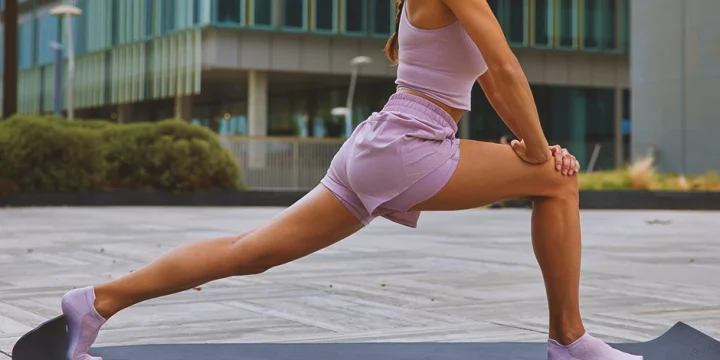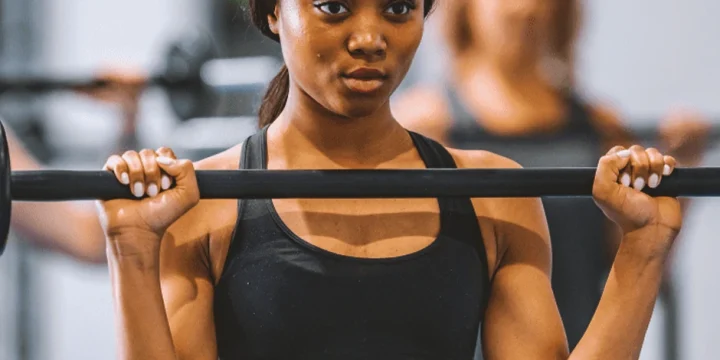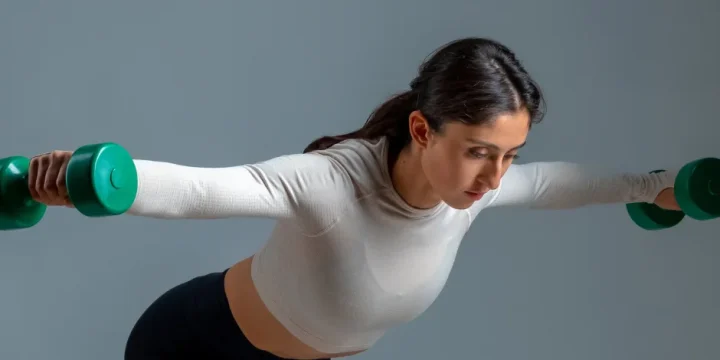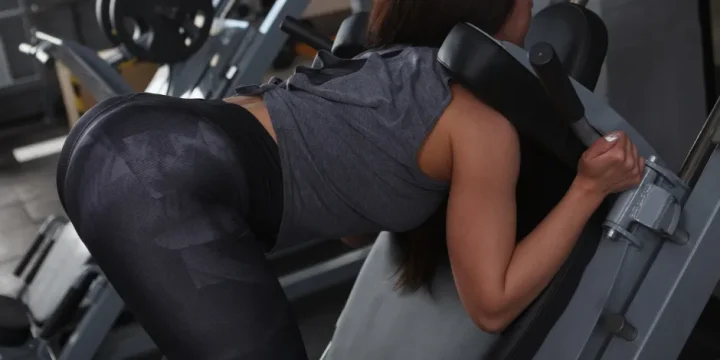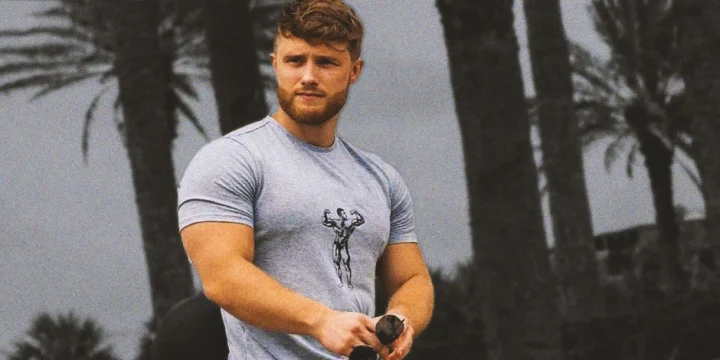Reverse pyramid training (RPT) is a high-energy exercise strategy.
It prioritizes quality over quantity, pushing your muscles to the limit with each rep. Lots of athletes perform it without knowing it.
Drawing from our experience, RPT concentrates effort on the initial sets, maximizing results.
Our training technique exploration highlighted the effectiveness of this training and confirmed that reverse pyramid training is ideal for those seeking muscle gain.
I’ve tested the training myself, and even when you end up with more body aches than you do with other workouts, it also performs better when done correctly.
I’m sharing my insights on how to get the maximum effort with fewer reps.
Quick Summary
- To start with reverse pyramid training, you need to identify the 1RM (repetition maximum) for every exercise in your routine.
- Reverse pyramid training allows you to gain muscle by lifting the maximum weight you can with fewer repetitions and then decreasing the load while increasing reps.
- According to studies published in Research Gate, reverse pyramid training is an effective way to build muscle, enhance strength, and boost metabolic conditioning.
- From my experience as a fitness coach, I believe RPT is unparalleled in maximizing workout efficiency and achieving rapid strength improvements.
How to Do a Reverse Pyramid Training Routine?

To perform a reverse pyramid training routine, you need to establish the maximum weight you can lift and prepare a routine where you decrease the load and maximize reps.
This is called one-repetition max (1RM). For each exercise, check the deadlift max calculator to determine your one-rep max (1RM).
Here’s how you structure an RPT routine:
- Select your exercises: RPT works well with compound exercises like squats, bench presses, and deadlifts.
- Set your maximum weight: Use the maximum weight for 4 to 6 repetitions in the first set. This is typically 85–90% of your 1RM.
- Decrease the weight by 10–20% for the next set: If you lifted 200 pounds in the first set, decrease to 160 and 180 in the second.
- Increase repetitions in the second and third sets: If you did five repetitions in the first set, aim for 6–8 in the second.
- Take a 2–3 minute break between sets.
Best RPT Exercises

RPT works great with full-body workouts and exercises compared to other training methods. This includes:
Deadlift
“Deadlift strength training, even without direct core training, was able to produce significant improvements in core strength.”
- Christian Wisdom Magtajas Valleser, Master of Science in Human Movement Science
The deadlift is a fundamental exercise in strength training that primarily targets the back, hips, and legs, as shown by studies published by Research Gate [1].
When executing it within the framework of a reverse pyramid training style, it's pivotal to grasp your personal strength capacities.
Implementing this exercise into your RPT-centered workout programs offers you the dual advantage of promoting power initially and progressively stimulating endurance as the loads decrease.
This approach not only broadens your strength but also contributes to a well-rounded and effective workout routine, as I've observed in several of my clients' progress."
Here’s how to do it:
- Establish your one-rep max (1RM) to calculate the maximal weight and a rep range of 4-6 reps.
- Stand with your feet hip-width apart. Put the barbell over your feet.
- Squat and take the bar with an overhand or mixed grip.
- Maintain a straight back as you lift the bar, extending your hips and knees to full extension. Keep the bar close throughout the motion.
- Repeat with less weight after 2-3 minutes.
Weighted Chin-ups

Weighted chin-ups challenge your upper body, focusing on your lats, biceps, and upper back.
Incorporating these into an RPT regimen requires carefully considering your ability to lift added body weights.
Here’s how to do it:
- Determine your 1RM, which includes your body weight plus the extra load.
- Secure the weight on your body using a belt. Position your hands shoulder-width apart on the pull-up bar using an underhand grip.
- Pull your body until your chin is at bar level. Keep control during the motion.
- Repeat through the whole set with the same weight.
Bench Press
Bench press, a quintessential chest exercise, also engages the shoulders and triceps effectively, which helps with substantial muscle growth.
It boosts hypertrophy when integrated into a reverse pyramid training routine.
Here’s how to do it:
- Go to the bench with your feet flat on the floor. Grab the barbell with a grip wider than shoulder-width.
- Lower the barbell to your chest in a controlled manner, then press the bar back until your arms are fully extended.
- Repeat according to your rep ranges.
Barbell Rows

The barbell row is an exercise that primarily targets the back muscles while also engaging the biceps and shoulders, and is a crucial component of a reverse pyramid training workout.
How to do it:
- Stand with your feet shoulder-width apart.
- Bend your knees slightly. Lean forward from your waist while keeping your back straight.
- Hold the barbell with an overhand grip. Let it hang in front of your knees.
- Pull the bar to your chest, and squeeze your shoulder blades together.
Also Read: Top Barbell Exercises
Overhead Press
When performed properly, overhead presses can enhance reverse pyramid training routines by targeting shoulders, triceps, and upper chest.
This exercise promotes lean body mass and complements the “reverse pyramid” strategy, optimizing strength gains and muscular endurance.
How to do it:
- Stand upright, and hold the barbell at shoulder height with your palms facing forwards.
- Push the barbell over your head until your arms are fully extended, then lower it back down in a controlled motion.
Back Squat
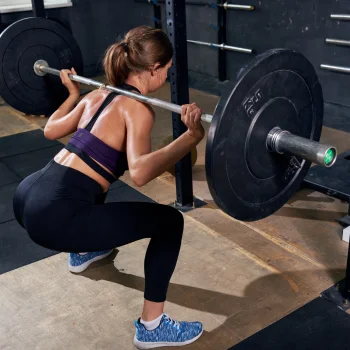
The back squat is a core strength exercise focusing on multiple muscle groups in your lower body, including your quadriceps, glutes, and hamstrings.
Incorporating it into a reverse pyramid regimen amplifies its potency, allowing for a more significant display of strength at the onset and targeting endurance as the weight lessens.
How to do it:
- Position the barbell on your shoulders, just below the neck.
- Stand with your feet shoulder-width apart.
- Lower into a squatting position by bending your knees while maintaining a straight back.
- Push back up to the starting position.
As an experienced personal trainer, I recommend complementing these workouts with a tailored nutritional plan, focusing on macronutrients and recovery.
I've seen firsthand how this combination can amplify the results.
What is Reverse Pyramid Training?

Reverse pyramid training (RPT) is a strength training method where you start with your heaviest weight and fewest reps, then progressively lighten the load and increase reps.
According to studies published on Research Gate, it’s an effective way to build muscle, enhance strength, and boost metabolic conditioning [2].
Rooted in hypertrophy training principles, RPT maximizes muscle demand when it's most responsive, optimizing strength and growth.
In my coaching experience, clients have achieved better recovery times with this approach, as it balances high-intensity exercise and recovery by preventing early workout fatigue.
“It is recommended to use the reverse pyramid method for exercises and be more careful when performing pyramid exercises.”
- Ali Abbasi, Ph.D. in Sport Biomechanics
The Benefits

RPT has five key benefits for gaining muscle.
They’re all based on the double-progression principle.
- Efficiency and Time-Saving: Reverse pyramid training efficiently enhances muscle mass. Compared to traditional hypertrophy training, RPT maximizes your efforts in less time by focusing on heavy lifts when you're most energized.
- Promotes Strength and Muscle Gain: RPT initiates your workout with the heaviest weights, activating muscle fibers and stimulating growth. As a key element of the reverse pyramid training guidelines, the gradual reduction in weight and increase in reps promotes hypertrophy and lean body mass.
- Prevents Overtraining and Enhances Recovery: The reverse pyramid effectively prevents overtraining. Lifting your heaviest weights when fresh reduces the risk of fatigue-related injuries. The subsequent decrease in intensity promotes muscle recovery, an essential aspect of muscle building.
- Suitable for All Levels: RPT can be adapted to all levels, enhancing muscle mass for beginners and experienced lifters alike. This is where reverse pyramid training shines, making it a versatile weight-training approach.
- Psychological Benefits: Beyond physical gains, the psychological resilience developed through RPT is a significant benefit, enhancing mental toughness and focus, which is crucial for athletes and fitness enthusiasts alike.
Tips to Progress In Your Reverse Pyramid Training Program

Here are some of the tips I always emphasize when working with clients. Apply them to your compound movements and workouts to protect your muscle tissue and have the best overall results.
- Prioritize Form and Safety: Proper RPT form is essential for muscle growth. Start with manageable weights, ensuring safety and building muscle over time.
- Progressive Overload: Constantly increase your weights or reps as you control the loads. This training method promotes muscle gains and strength improvement.
- Adequate Rest Between Sets: Resting between sets prepares you for as many reps as possible in the next set. Allow 2-3 minutes of rest for optimal performance.
- Stay Consistent: Regular workouts in your RPT program lead to consistent muscle gain.
- Listen to Your Body: Adjust your weights or take a rest day. Your body's recovery is vital for gaining muscle. Be mindful when building strength and muscle.
Short Comparison of Reverse Pyramid Training vs Traditional Pyramid Training

Reverse pyramid training (RPT) starts with high weight and low reps, harnessing peak energy levels for strength gains.
Instead, traditional pyramid training (TPT) or traditional hypertrophy training begins lightly, gradually increasing weight to prep muscles, proving beneficial for beginners or endurance training.
FAQs
How is Reverse Pyramid Training Effective?
Reverse pyramid training is effective by leveraging your strength at the start of workouts, allowing you to lift heavier and thus promoting superior muscle growth and strength gains.
How Long Should I Rest Between Reverse Pyramid Training Sets?
You should rest between 2-3 minutes between reverse pyramid training sets. This timeframe gives you enough recovery time and strength restoration for your next round.
Should I Add Warm-Ups in Reverse Pyramid Training Programs?
Yes, warm-ups are essential in RPT. They prepare your muscles and joints for heavy lifting, reducing injury risks and prime your nervous system for the exercises ahead.
Is Reverse Pyramid Training Good to Gain Muscles?
Yes, reverse pyramid training is good for gaining muscles and bulking. This is hypertrophy training that ensures muscle growth.
References:
- https://www.researchgate.net/publication/315730069
- https://www.researchgate.net/publication/361107704
About The Author
You May Also Like

